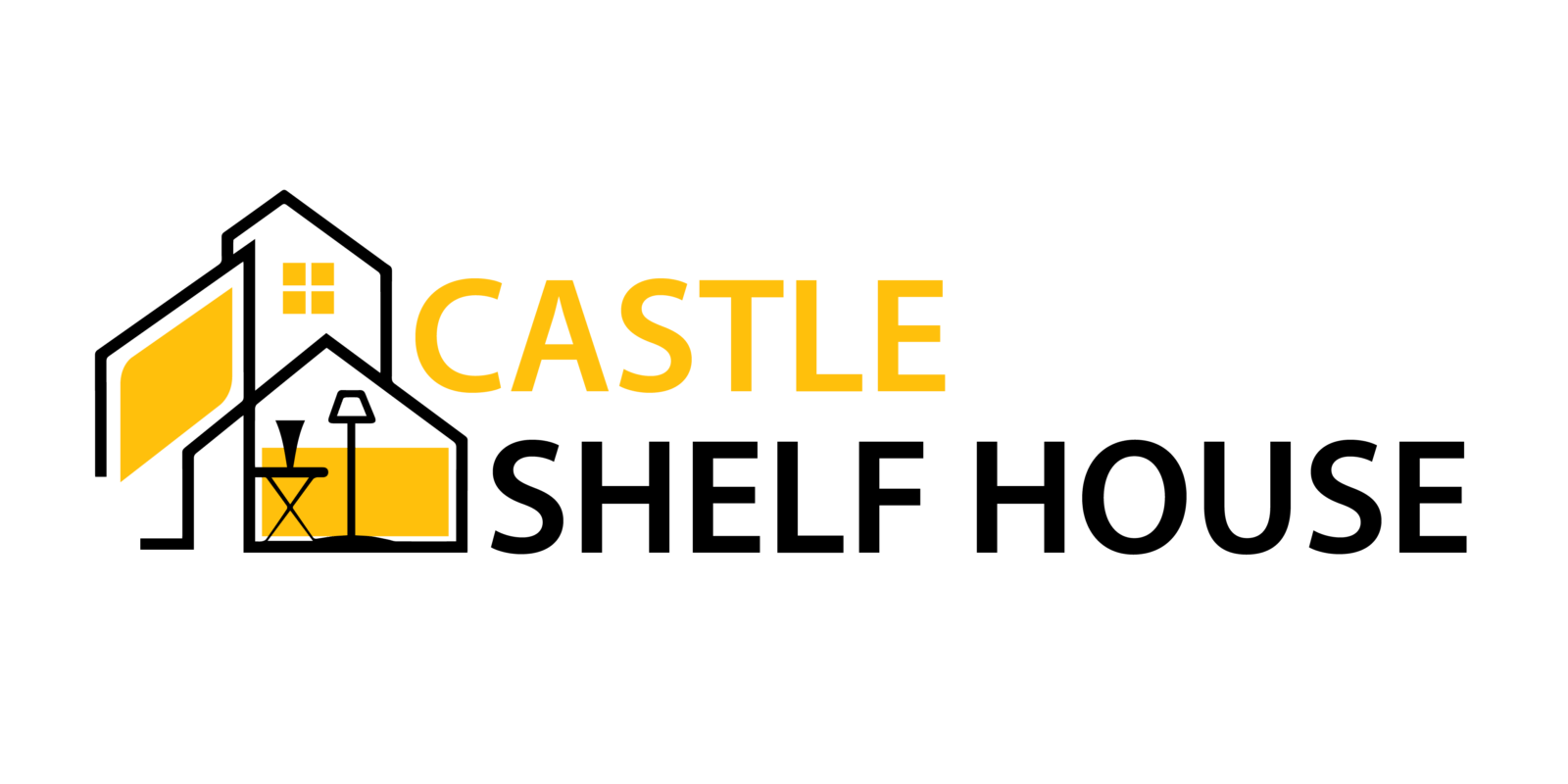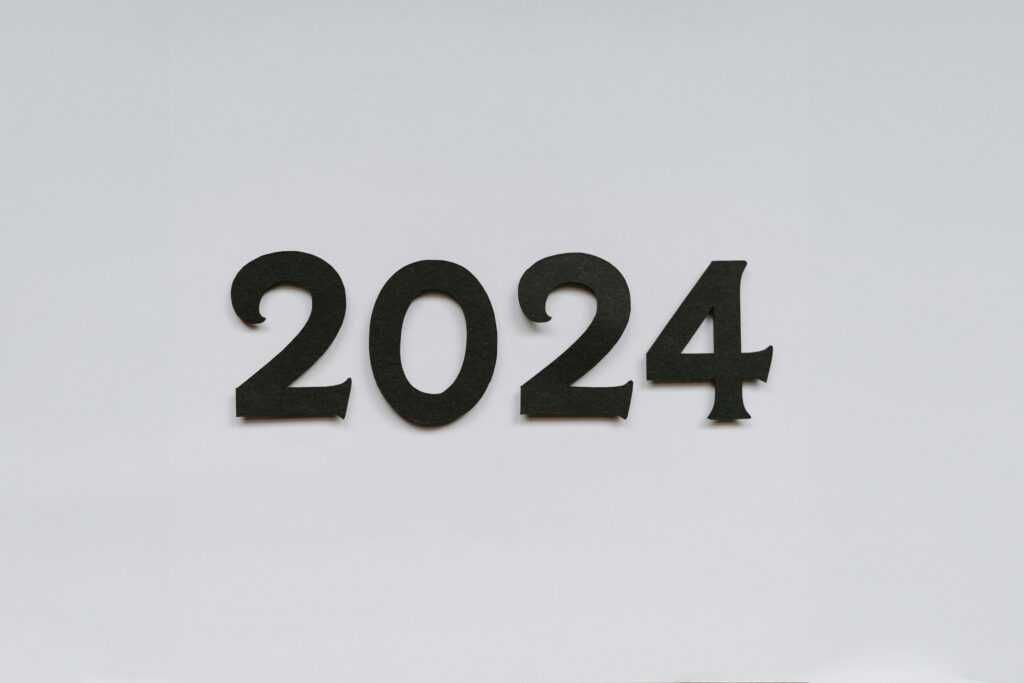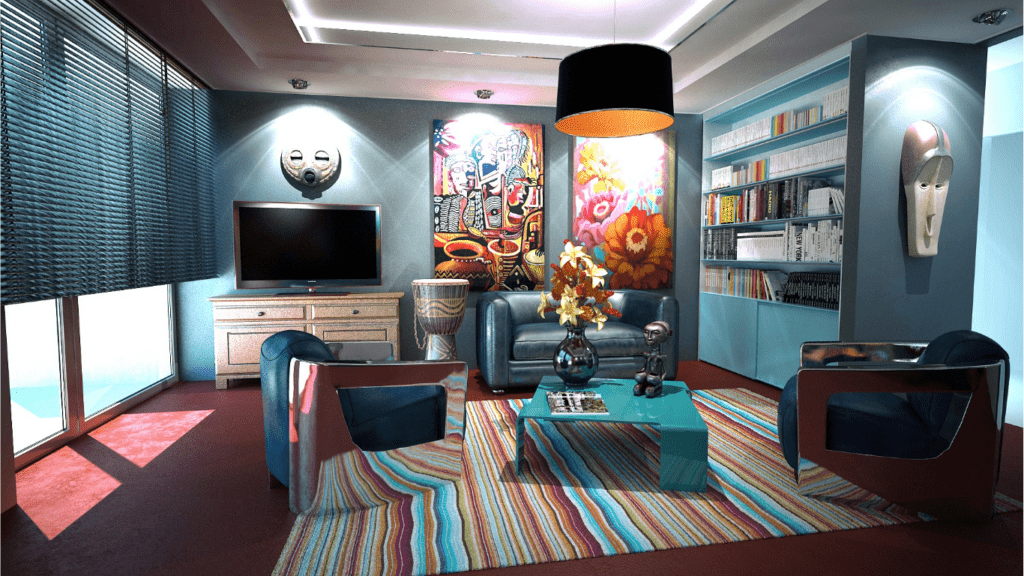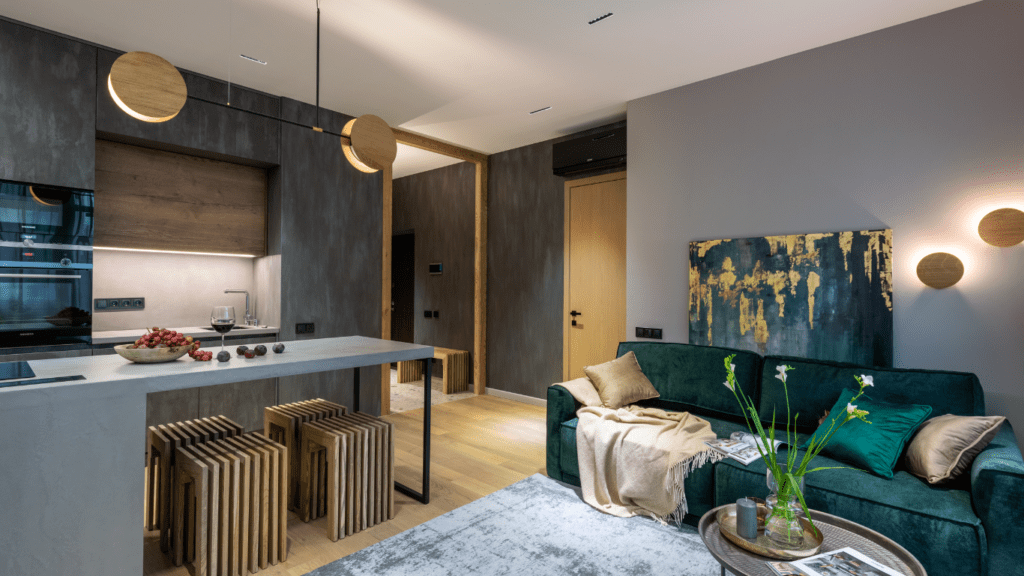Clean Lines, Warmer Tones
Minimalism isn’t fading it’s evolving. The cold, sterile look is out. In its place: a version of minimalism that feels lived in, warm, and a little softer around the edges. Think brighter neutrals instead of stark whites. Soft browns, creamy beiges, and layered textures that nod to nature without going full rustic. It’s minimalism with mood.
The shapes are still crisp slim profiles, clean cuts, simple silhouettes but they’re grounded by earthy fabrics and tactile finishes. It’s about balance: sharp geometry meeting organic materials. A walnut slab dining table under sculptural lighting. A concrete countertop paired with linen upholstery. Tone on tone design that doesn’t scream for attention but holds it.
In 2026, minimalism keeps its quiet edge, but now it breathes. It’s stripped down just not stripped of warmth.
Eco Conscious by Default
Sustainability isn’t a theme anymore it’s just the baseline. In 2026, eco conscious design isn’t about making a statement. It’s about making better decisions. Think reclaimed woods, vintage furniture with a second life, stone and ceramics that carry texture and character. These materials aren’t just green, they’re beautiful and they’re pushing high end interiors into more authentic, grounded territory.
Biophilic design still has a strong grip. People want spaces that breathe. Expect homes filled with leafy greens, big windows that pull in sunlight, and layout flows that mimic nature. There’s a calm that comes from living among organic shapes and natural light, and smart designers are leaning into it. Sustainability isn’t loud it’s lived.
Smart & Invisible Tech
The smartest homes in 2026 won’t look like scenes from a sci fi movie and that’s the point. Built in lighting that adapts to time of day, wireless charging nestled into side tables, and climate systems that adjust in silence are becoming the new standard. This tech doesn’t shout. It disappears into the design.
Spaces are getting smarter, but not louder. Flashy gadgets are being replaced by seamless integration. No blinking lights. No awkward installations. Just function wrapped in form. Designers are working with tech, not around it embedding solutions into walls, furniture, and layouts so that performance supports the aesthetic, not competes with it.
The result? Rooms that feel calm, look clean, and work exceptionally well. Practical upgrades that actually make life easier without drawing attention to themselves.
Form doesn’t lose. Function just blends in. That’s the future.
Adaptive Furniture for Smaller Living

Square footage isn’t what it used to be but that doesn’t mean style has to suffer. Designers are leaning hard into flexible furniture that makes small spaces work smarter. Think modular sofas that shift shapes depending on your needs, nesting tables that tuck away when not in use, and expandable dining sets that go from solo coffee nook to full on dinner party.
These pieces aren’t just functional. They’re good looking and designed with intention. Clean lines, soft curves, and materials that layer well with any vibe industrial, coastal, Scandinavian, or eclectic. The design world has woken up to the fact that most people aren’t living in castles. And that’s okay.
It’s about making every inch count. When your furniture adapts with your life guest nights, work from home days, movie marathons it stops being just decor and becomes part of how you live.
Want more? Explore expert strategies for designing small spaces.
Statement Ceilings and Floors
Design has moved beyond just eye level. In 2026, people are finally treating floors and ceilings like part of the story again. Floors are getting bolder patterned wood, inlays, oversized checkerboards. It’s not just what you stand on anymore; it’s setting a tone. Same goes above your head. Ceilings are becoming mood setters with painted murals, subtle colors, and even backlit panels. Going vertical adds surprise and energy.
Texture is showing up where you least expect it beneath your feet or overhead. Think rough hewn beams across the ceiling or layered rugs over polished stone. It can ground the room, or lift it, depending on what you’re after. This kind of detailing makes a space feel finished without going over the top personal, intentional, but not shouting for attention.
Personal Curation Over “Perfect”
Homes in 2026 are stepping away from the showroom. The days of obsessively matched sets, symmetrical furniture layouts, and flawless finishes are fading. In their place: spaces that feel real. That means shelves stocked with collected finds, walls warmed by uneven brush strokes, and rooms filled with objects that tell stories not just match color palettes.
Designers are seeing a sharp rise in handmade accents ceramics with fingerprints, textiles dyed in small batches, and furniture with visible grain and imperfections. These elements bring character. Imperfection invites engagement. Instead of feeling like you’re walking into a catalog, a curated home now feels like you’ve stepped into someone’s life.
Cultural layering also plays a growing role. Handmade Moroccan tiles meet Japanese wabi sabi bowls. Scandinavian lighting hangs over reclaimed wood from a New Orleans shotgun house. The message is clear: uniqueness beats uniformity. It’s less about impressing and more about expressing. In 2026, that’s what makes a space truly stylish.
What Designers Are Watching Now
AI is starting to show up behind the scenes, helping designers map out layouts and test how materials behave in different lighting or configurations fast. It’s not replacing instinct or artistry, but it’s becoming a serious partner in the design process. Need to visualize how textured concrete plays with warm oak in a 150 sq. ft. living room? AI will get you there in minutes, not hours.
On the surface, muted coral, midnight green, and smokey lavender are showing up across concept boards and mood palettes. These colors aren’t loud, but they’ve got presence especially when layered with rich textures or moody lighting. They’re versatile, modern, and surprisingly calming when done right.
As for upgrades, micro luxuries are leading the charge. Think brushed gold cabinet pulls, built in motion lighting, custom drawer organizers. They don’t demand a total overhaul but still elevate the feel of a space. It’s the kind of detail work that really shines in small homes or apartments the perfect mix of efficiency and indulgence.
Design in 2026 isn’t about the biggest statement. It’s about focus, balance, and utility. For designers working with compact areas, this is where smart tools and smart design come together. Explore expert strategies for designing small spaces.


 Harry Marriott – Lead Interior Stylist
Harry Marriott is Castle Shelf House’s Lead Interior Stylist, known for his keen eye for detail and expertise in modern and classic home designs. With a background in interior architecture, Harry brings innovative styling solutions to the forefront, ensuring that each home reflects a unique personality. His approach to furniture placement and design trends helps clients create harmonious living spaces that combine aesthetics with functionality.
Harry Marriott – Lead Interior Stylist
Harry Marriott is Castle Shelf House’s Lead Interior Stylist, known for his keen eye for detail and expertise in modern and classic home designs. With a background in interior architecture, Harry brings innovative styling solutions to the forefront, ensuring that each home reflects a unique personality. His approach to furniture placement and design trends helps clients create harmonious living spaces that combine aesthetics with functionality.
